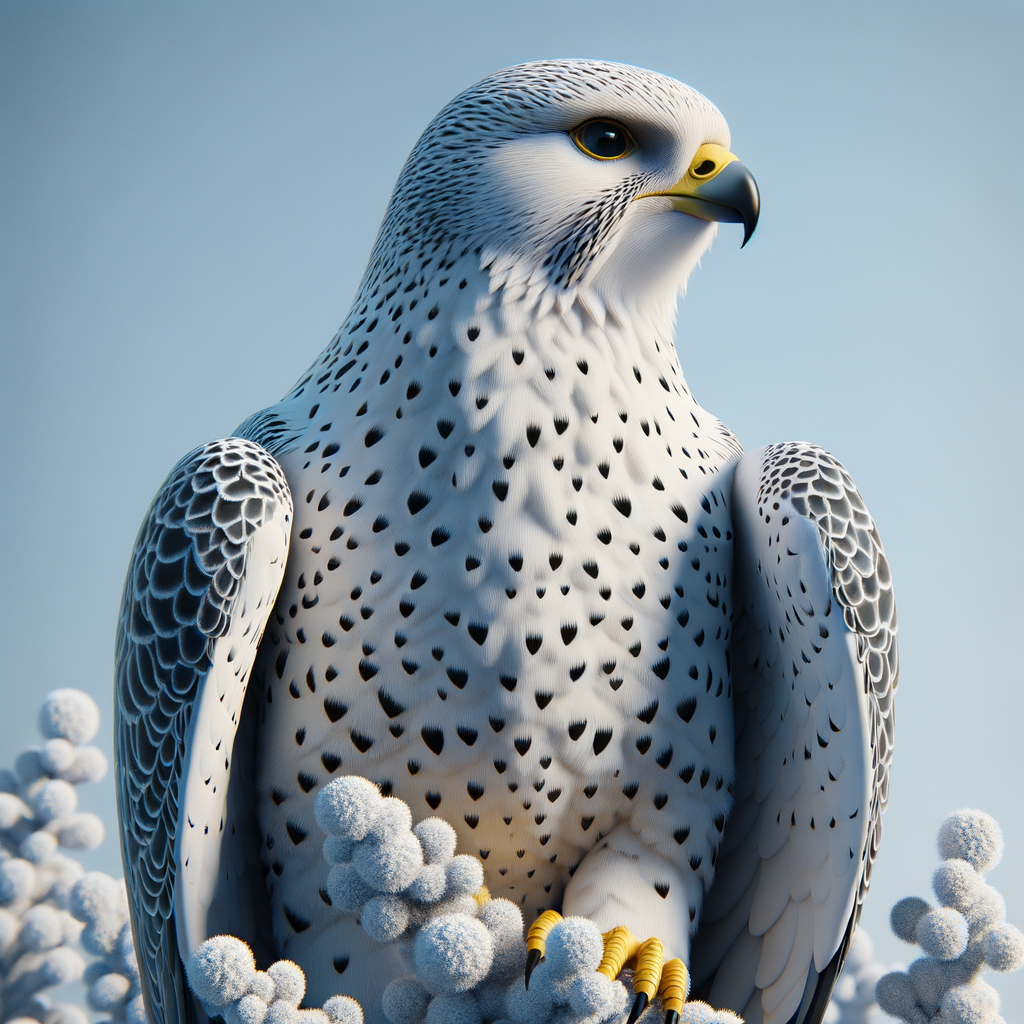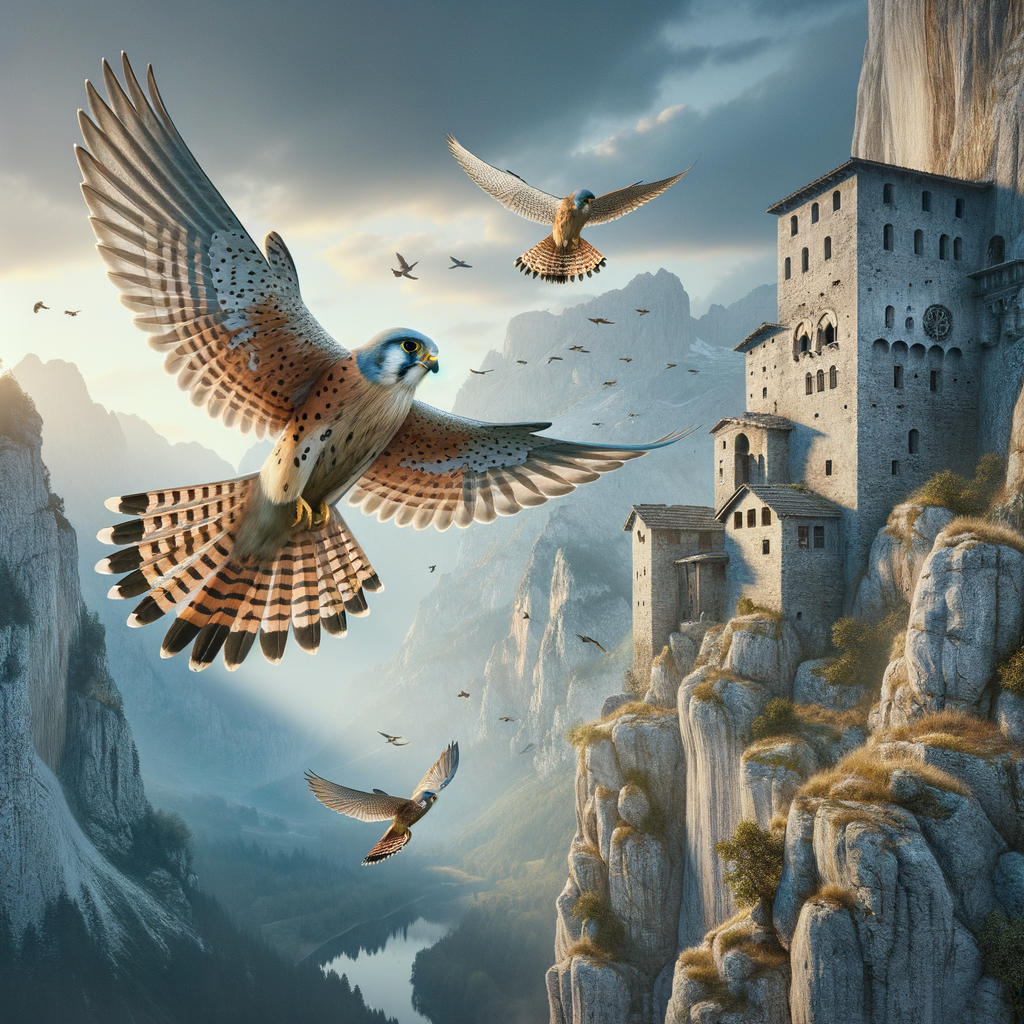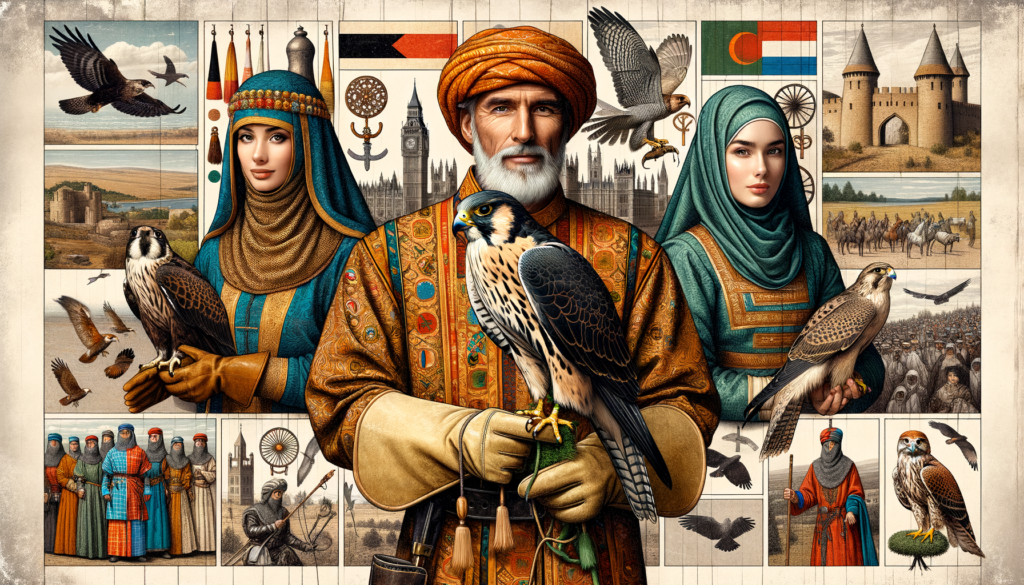Discover the Fascinating World of Gyrfalcons
- Gyrfalcons are the largest falcon species in the world.
- They primarily live in the Arctic and Subarctic regions.
- These majestic birds have a varied diet, mainly hunting other birds and small mammals.
- Gyrfalcons exhibit impressive speed and agility during flight.
- Their plumage can range from white to dark gray, adapting to their surroundings.
- They build their nests on cliffs and high places to protect their young.
- Conservation efforts are vital as habitat changes impact their population.
- Learning about gyrfalcons can inspire a deeper appreciation for wildlife and nature.
Discover the Majesty of Gyrfalcons: Nature’s Enigmatic Hunters
Imagine you’re wandering through the rolling, mystical hills of Ireland, where each stone holds a story, and every flutter in the sky sparks curiosity. Just as the ancient Celts revered the mighty red deer for its elegance and mystery, so too should we admire the gyrfalcon’a majestic bird that rules the skies with unparalleled grace and power.
So, buckle up and join us as we unravel the secrets of the gyrfalcon, a creature so intriguing it will leave you spellbound. Keep reading, and you’ll find that the world of gyrfalcons is as mesmerizing as a tale spun in the heart of an Irish glen!
Exploring the World of Gyrfalcons
The gyrfalcon is one of the most fascinating and majestic birds of prey in the world. Known scientifically as Falco rusticolus, this powerful falcon is the largest of the gyr species and can be found in the Arctic regions of North America, Europe, and Asia. As a highly prized bird in the sport of gyrfalconry in falconry, the gyrfalcon has a rich history and unique characteristics that make it stand out among the various species of falcons.
Physical Characteristics
Gyrfalcons are known for their impressive size and powerful build. They often exhibit color variations ranging from white to dark gray or even nearly black. This color variation helps them blend into their Arctic environment. The females are generally larger than the males, which is common among raptors. Their strong, sharp talons and beaks make them efficient hunters, capable of taking down large prey.
Learn more about the different species of falcons.
Habitat and Behavior
These falcons thrive in cold environments and are typically found in remote, icy habitats such as tundras and coastal cliffs. The gyrfalcon’s keen eyesight and rapid flight enable it to hunt with extraordinary precision. They are known for their aerial agility and can often be seen gliding gracefully through the sky before making a swift dive to capture their prey.
Gyrfalconry in Falconry
Gyrfalconry in falconry involves the practice of training gyrfalcons to hunt in partnership with humans. This ancient art has been practiced for centuries, particularly in the medieval and Renaissance periods. Today, gyrfalconry is a respected tradition that continues to captivate enthusiasts worldwide.
Discover the history of falconry.
Training and Equipment
Training a gyrfalcon requires a comprehensive understanding of falconry techniques and specialized equipment. Falconers use hoods, jesses, and leashes as essential tools for handling and training these birds. The process involves positive reinforcement and patience, ensuring that the falcon forms a bond with its handler and understands the signals given during hunting.
Explore training techniques and falconry equipment.
Health and Nutrition
Maintaining the health of a gyrfalcon is crucial for successful falconry. Their diet mainly consists of high-protein foods such as small mammals and birds, which help keep them in peak physical condition. Regular health check-ups and a balanced diet are vital components of responsible falconry.
Learn about falcon health and nutrition.
Legal Aspects
Falconry, including gyrfalconry, is regulated by various laws to ensure the protection and conservation of these magnificent birds. Falconers must adhere to licensing requirements, hunting regulations, and international laws governing the transport and trade of falcons.
Understand the legal aspects of falconry.
Cultural Significance
Gyrfalcons hold a special place in the cultural heritage of many regions. From the Arctic indigenous communities to medieval European knights, these birds have been honored and revered across different cultures throughout history.
Read about falconry in cultures.
By understanding and appreciating these aspects of the gyrfalcon, we can continue to foster the tradition of falconry and ensure the conservation of these incredible birds for future generations.
For beginners interested in getting started with falconry.
All About Gyrfalcons
Here at Learn Falconry, we’re fascinated by the majestic Gyrfalcon. These incredible birds are the largest of the falcon species and are renowned for their powerful flight and striking presence. Let’s dive into some specific aspects of the Gyrfalcon using detailed information.
Identification
- Scientific Name: Falco rusticolus
- Common Name: Gyrfalcon
- Physical Characteristics:
- They are stocky with relatively long tails and broad wings.
- Their flight is powerful, and they are darker above and paler below.
- Belly markings vary from small and crisp to big and chunky.
- Color Variations:
- They range from pure white to silvery-gray to dark sooty-brown, exhibiting different morphs depending on their location.
Distribution and Habitat
- Breeding Grounds:
- Arctic coasts and tundra
- Islands in northern North America and the Eurosiberian region
- Wintering Grounds:
- They migrate to large open areas after breeding, often dispersing more widely during winter.
Population
Here are some insightful statistics on the Gyrfalcon population:
| Location | Breeding Pairs | Individuals |
|---|---|---|
| Canada & USA | 1,860 – 3,725 | 3,720 – 7,450 |
| Mature Population | – | â 83,000 |
Diet and Hunting
- Primary Prey:
- Their diet mainly includes birds and mammals, such as ptarmigan and waterfowl.
- They also hunt fish and other small mammals.
- Some examples include lemmings, ground squirrels, and rabbits.
Conservation Status
- IUCN Red List: Listed as Least Concern.
- Population Trend: The population is stable with no significant decline over the last decade.
Behavioral Traits
- Activity: Primarily diurnal, meaning they are mostly active during the day.
- Flight:
- Known for their robust and powerful flight.
- They are scarce even within their breeding grounds, making them a rare spot for falconers.
Size and Sex Differences
- Size:
- Females are generally larger than males, a common trait in birds of prey.
Evolution and Genetics
Studies reveal that the Icelandic population of Gyrfalcons is genetically unique compared to other sampled populations. There is a varying degree of gene flow between populations in western and eastern Greenland, highlighting their specialized adaptability and evolutionary traits.
Fossil Record
- Historical Findings:
- Fossils of the paleosubspecies, Falco rusticolus swarthi, have been discovered in North America, dating back to the Late Pleistocene.
Monitoring and Conservation Efforts
- Climate Change: Gyrfalcons are significantly threatened by climate change due to their sensitivity to environmental changes.
- Habitat Disturbances: Human activities and tourism can disrupt their nesting areas.
Integrative Techniques:
- Environmental DNA: Utilization improves monitoring and conservation strategies.
- Microbiome Research: Advances veterinary care, ensuring healthier falcons through understanding their microbial ecosystem.
These fantastic birds are not only vital to the wildlife in their native regions but also immensely intriguing subjects for research and conservation. At Learn Falconry, we deeply appreciate the Gyrfalcon’s role in our ecosystem and its fascinating characteristics.
The Majestic Gyrfalcon: An Enduring Symbol
The Gyrfalcon stands as one of nature’s most remarkable creatures, deserving our admiration and conservation efforts. With a population of around 83,000 mature individuals, these majestic birds maintain a strong presence in their circumpolar arctic and subarctic habitats. Their striking appearances range from pure white to dark sooty-brown, and they are the largest of all falcon species, showcasing their formidable power and grace.
Living primarily in Arctic tundra regions, Gyrfalcons display powerful flight patterns and feed on a diet predominantly consisting of birds and mammals. Despite the challenges posed by climate change and habitat disturbances, their population trend remains stable, securing their status as “Least Concern” on the IUCN Red List.
Their unique genetic makeup, especially the distinct Icelandic population, adds another layer of incredible depth to their story. Modern techniques in genomic research and environmental DNA monitoring contribute significantly to understanding and preserving these skies’ rulers.
As you marvel at the Gyrfalcon, remember their resilience and beauty. They’re not just birds; they’re an enduring symbol of the wild, representing the intertwined complexities of nature and the urgent need for conscientious conservation.



